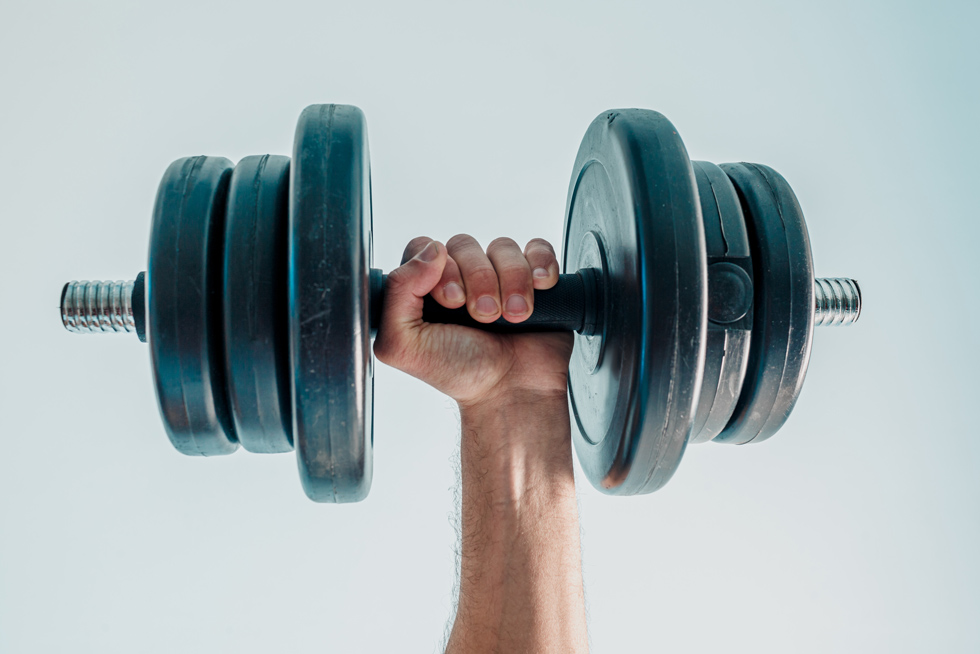Testosterone Series Part 2. Testosterone, Muscle Mass and Fat


This is a well known use of testosterone (T)- the ‘muscle’ hormone. Not only does it increase the size of muscle mass, it also increases the strength and power of the muscle fibres. (1) There is also some benefit from the other well-known ‘side effect’ of raised T, which is increased oxygen carrying capacity of the blood (due to increase in the number of red blood cell). This leads to better tissue reperfusion after exercise and so one is able to exercise longer and/or more efficiently.
In the young, it is sometimes taken to ‘bulk’ alongside anabolic steroids- this is usually ‘underground’ usage and not what we will be discussing here although I have been hearing a lot from people suffering the repercussions of self-administration.
What happens in someone with normal T?
Firstly, everyone has a different normal and it might be a good idea to do a blood test when you feel like you’re at your peak physically just to know what’s your normal. It will come in handy 10 years down the line. For some, low normal may feel great but for others it may seem deficient. Normal blood ranges are there as a guide and should be used as just that- a guide.
If you feel symptoms of low T but your blood range is within normal, it may mean that you function better at higher levels. So your normal is NOT another person’s.
Within normal ranges, increasing T (by supplementation etc) will not change muscle mass much.
Increase in resistance training leads to increase in testosterone production acutely.
Supplementation to levels at least 20-30% of top of normal range (supraphysiologic levels) is necessary to make a statistical difference to muscle mass.
What happens in age-related decline?
A man first notices a drop in T when exercise does not produce the same results it used to. Diet and activity levels being stable, you will notice the invariable creep of middle or belly fat- the hard to shift love handles. Initially, you may be able to shift it with a change in exercise routine or changes in the diet. After a while, you’ll find that it does not work as well anymore.
All over body fat versus muscle mass ratio will see a shift as well. There will be softer bits all over. The tendency will be toward building more fat depots rather than muscle.
Again increase in resistance training leads to increase in testosterone production acutely.
Over time, a vicious circle develops where increased fat and decreased muscle mass leads to lower energy levels to lower activity levels to increased fat, so on and so forth. This leads to the change in body shape very characteristic of low T.
Ageing beyond 35-40 years is associated with a 1-3% decline per year of testosterone according to one study. (2)
In women, the most noticeable changes occur after menopause, again with a similar distribution of fat. This is alongside oestrogen and progesterone drop and hence usually missed or brushed off as not being relevant.
Low T causes increase in fat mass and is associated with obesity. The mechanism is not well known. One study succeeded in demonstrating that androgens inhibit the creation of fat. (3) There is still a lot of research required in this area but observational studies certainly seems to support this.
TRT increases muscle mass, strength and power.
The leaner a person is, the higher the testosterone levels. Lean here refers to the lack to fatty tissue as opposed to lean/bulky muscle mass.
The fatter a person is, the lower the testosterone levels.
Benefits of more muscle mass: leaner, more energy/metabolic efficiency, increase insulin sensitivity and blood sugar control, improve balance and mobility, improve strength, stability and endurance, reduce risk of injury, create metabolic reserve amongst a host of other benefits.